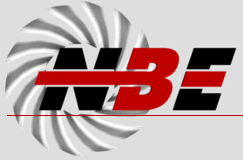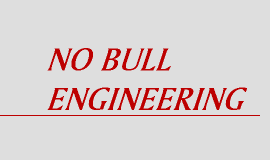PUMP ROTORDYNAMICS MADE SIMPLE
by
Mark A. Corbo, P.E.
President & Chief Engineer
No Bull Engineering
and
Stanley B. Malanoski
Engineering Consultant
No Bull Engineering
Originally presented at:
Texas A&M University Turbomachinery Laboratory
15th International Pump Users Symposium
March 1998
One of the foremost concerns facing pump users today is that of rotordynamics. As pump speeds have increased to provide improved efficiencies and lighter packages, rotordynamics has assumed a significantly greater role in determining pump reliability. Pump rotordynamic problems often manifest themselves as shaft fatigue failures and wear/failures of bearings, seals, and impellers.
The aim of this paper is to provide users with a basic understanding of rotordynamics and a practical design procedure that can be used to ensure that their pumping systems will not encounter major difficulties in the field. Since pumps are inherently hydraulic devices, their rotordynamic behavior is considerably different from that of their pneumatic turbomachinery counterparts like compressors and turbines. Accordingly, the paper concentrates on these differences and how to handle them in the design process.
The paper begins with a review of the fundamentals of rotordynamics and the types of analyses that should be employed in the design process. Guidelines are provided for modeling and for performing rotordynamic staples such as undamped critical speed, unbalance response, and damped natural frequency/stability analysis. The generation of a critical speed map and the tremendous amount of information that can be gleaned from it is also described in detail.
Attention is then turned to the factors that render the rotordynamic analysis of pumps significantly different from that of pneumatic turbomachinery. First and foremost is the fact that the mass of fluid contained in hydraulic machines is not insignificant compared to that of the rotor. Accordingly, the “wet” critical speeds of a pump are usually considerably different from their “dry” counterparts.
A major factor in this difference is that locations of close-clearance annular fits, such as at seals, balance pistons, wear rings, and impellers, generate significant fluid-structure interaction forces which must be incorporated into the model as dynamic stiffness, damping, and mass coefficients. The presence of these additional supports can generate rotor instabilities and introduce errors into the calculation of journal bearing dynamic coefficients. Additionally, the liquid mass entrained within impellers can produce a “hydraulic unbalance” which is often larger than the mechanical unbalance and, thus, must be accounted for in response calculations. Finally, rotors immersed in liquid experience a fluid coupling with their casings which is not accounted for in conventional calculations.
The unique problems often associated with vertical pumps are then explored in detail. Since the “casing” for many vertical pumps is a cantilevered flexible column, rotor-casing interactions must be accounted for by a means such as multi-level modeling. In addition, due to the absence of a gravity load, vertical pump bearings are usually lightly loaded, rendering them especially susceptible to instability problems. Finally, the use of process fluids to lubricate journal bearings often requires non-standard means for determination of the dynamic coefficients.
Throughout the paper, the authors cite case studies where they have made practical use of the described analysis techniques. Finally, a generic step-by-step procedure that users can utilize to analyze any pumping machine they might encounter is provided.
ORDER YOUR FREE COPY
BACK
| Home | Why Hire Us? | Services | Principals & Staff | Clients |
| Technical Papers | Short Courses | News Items | Contact Us |

